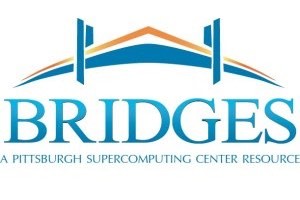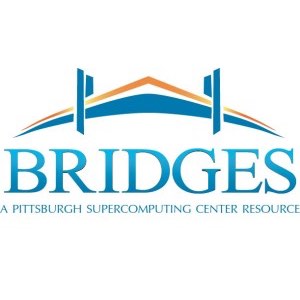 XSEDE is now accepting 2016 Research Allocation Requests for the Bridges supercomputer. Available starting in January, 2016 at the Pittsburgh Supercomputing Center, Bridges represents a new concept in high performance computing: a system designed to support familiar, convenient software and environments for both traditional and non-traditional HPC users. It is a richly-connected set of interacting systems offering a flexible mix of gateways (web portals), workflows, Hadoop and Spark ecosystems, interactivity, and batch processing.
XSEDE is now accepting 2016 Research Allocation Requests for the Bridges supercomputer. Available starting in January, 2016 at the Pittsburgh Supercomputing Center, Bridges represents a new concept in high performance computing: a system designed to support familiar, convenient software and environments for both traditional and non-traditional HPC users. It is a richly-connected set of interacting systems offering a flexible mix of gateways (web portals), workflows, Hadoop and Spark ecosystems, interactivity, and batch processing.
Bridges will serve a wide variety of applications and scientists, especially those new to supercomputing and without specialized programming skills. It will do so by providing a high degree of interactivity, gateways and tools for gateway-building, and a very flexible user environment including widely-used software such as R, Java, Python, and MATLAB. Bridges will feature persistent database and web services to support gateways, collaboration, and new levels of access to data repositories. Using virtualization, Bridges will support application-specific environments and interoperability with clouds.
Bridges will include:
- Compute nodes with hardware-supported shared memory ranging from 128GB to 12TB per node to support genomics, machine learning, graph analytics, and other fields where partitioning data is impractical
- GPU nodes to accelerate diverse applications, for example, in machine learning, image processing, and materials science
- Database nodes to support data management, analytics, integration, and fusion and to drive gateways and workflows
- Webserver nodes to host gateways and provide access to community datasets
- Data transfer nodes with 10 GigE connections to enable data movement between Bridges and XSEDE, campuses, instruments and other advanced cyberinfrastructure
Bridges could be a good fit for you if:
- You want to scale your research beyond the limits of your laptop, using familiar software and user environments.
- You want to collaborate with other researchers with complementary expertise.
- Your research can take advantage of any of the following:
- Rich data collections: Rapid access to data collections will support their use by individuals, collaborations and communities.
- MPI jobs requiring up to 1176 cores (ensemble and other loosely-coupled jobs requiring more
cores in aggregate can exceed 1176 cores). - Cross-domain analyses: Concurrent access to datasets from different sources, along with tools for their integration and fusion, will enable new kinds of questions.
- Gateways and workflows: Web portals will provide intuitive access to complex workflows that run “behind the scenes.”
- Large coherent memory: Bridges’ 3TB and 12TB nodes will be ideal for memory-intensive applications, such as genomics and machine learning.
- In-memory databases: Bridges’ large-memory nodes will be valuable for in-memory databases, which are important due to their performance advantages.
- Graph analytics: Bridges’ hardware-enabled shared-memory nodes will execute algorithms for large, nonpartitionable graphs and complex data very efficiently.
- Optimization and parameter sweeps: Bridges is designed to run large numbers of small to moderate jobs extremely well, making it ideal for large-scale optimization problems.
- Rich software environments: Robust collections of applications and tools, for example in statistics, machine learning and natural language processing, will allow researchers to focus on analysis rather than coding.
- Data-intensive workflows: Bridges’ file systems and high bandwidth will provide strong support for applications that are typically I/O bandwidth-bound. One example is an analysis that runs best with steps expressed in different programming models, such as data cleaning and summarization with Hadoop-based tools, followed by graph algorithms that run more efficiently with shared memory.
- Contemporary applications: Applications written in Java, Python, R, MATLAB, SQL, C++, C, Fortran, MPI, OpenMP, OpenACC, CUDA, and other popular languages will run naturally on Bridges.
In this video, Nick Nystrom presents: Introduction to Bridges – Connecting Researchers, Data and HPC.
You can request an allocation on Bridges through the XSEDE User Portal. You will need to create an XSEDE portal account before you can apply if you don’t already have one.




